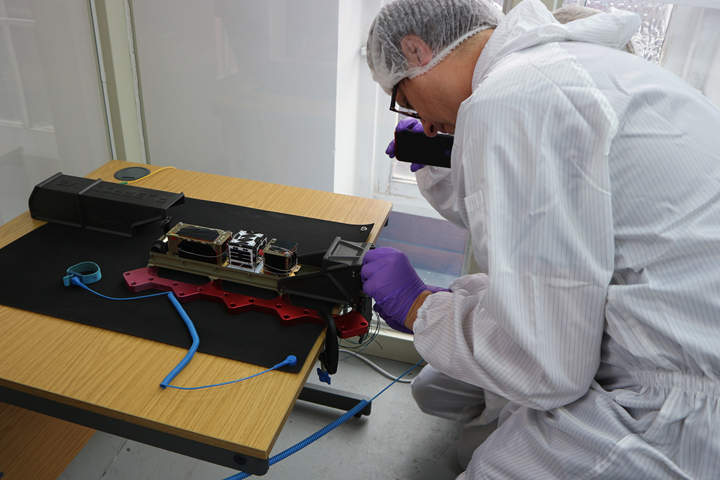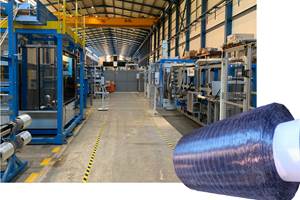
Source | CRP Technology
The initial idea for PocketQubes, first proposed by Professor Robert J. Twiggs of Morehead State University (MSU, Morehead, Ky., U.S.), was to develop “a satellite that fits in your pocket.” The result is a miniaturized satellite with a typical size of 5 cubic centimeters — which is one-eighth the volume of a CubeSat — with a mass of no more than 250 grams. Commercial off-the-shelf components can be used for its electronics.
PocketQubes, first developed in 2009, are designed to de-orbit and decay upon re-entry into the earth’s atmosphere, a process that takes 6-12 months depending on the size of the satellite, the altitude they are deployed from and other factors. They can undertake a variety of research tasks: for example, BME University’s SMOG-P satellite features a spectrum analyzer to measure manmade electromagnetic pollution from space. Other uses include testing thermal isolation materials in space, sharing educational data with the public from space, communications and other experiments.
The first PocketQube Standard was issued in June 2018, providing a shared platform to the PocketQubes community. One contributor to this community is Alba Orbital (Glasgow, U.K.), a company that builds its own PocketQube satellite platforms and also provides parts and launch services to other companies, universities and space agencies around the world for their platforms.
“The material, combined with the manufacturing technique, allowed us the option to design parts that cannot be manufactured with traditional techniques … and delivered in a fraction of the time.”
Recently, the company needed to build an updated version of its AlbaPod 2.0 PocketQube satellite deployer, aiming to improve on the previous design’s weight, manufacturability, access and safety features. Alba Orbital turned to 3D printing specialist CRP Technology (Modena, Italy) for manufacture of the deployer, using the company’s Windform TOP-LINE composite materials. According to CRP, most of this product line is suitable for space applications and have passed outgassing tests at NASA and the European Space Agency.
A main factor in the choice of CRP’s composite materials was that the product needed to be both lightweight and already approved for flight by major launch providers, easing adoption of the launcher.
According to CRP, after initial 2D and 3D analysis, Windform XT 2.0 carbon fiber composite material from the Windform TOP-LINE range was chosen for the project, to be used in combination with selective laser sintering (SLS).
“As the product needed to withstand a launch to space while containing several satellites, the pod needed to withstand high vibrations, and in the worst scenario, contain any satellite that breaks free internally. Windform XT 2.0’s toughness and strength make it a perfect candidate for this use case,” says Alan Easdale, mechanical engineer at Alba Orbital and designer of the new AlbaPod.

Source | CRP Technology
Windform XT 2.0 is a non-outgassing, lightweight fiber-reinforced polyamide. According to CRP, the material, which is a replacement for its previous Windform XT product, features improvements in mechanical properties including an 8% increase in tensile strength, a 22% increase in tensile modulus and a 46% increase in elongation at break.
The resulting satellite launcher, called AlbaPod v2, is reported to be an extremely lightweight, flight-proven, 3D-printed deployer able to accommodate up to six PocketQube satellites. It has a mass of less than 500 grams, which is 60% less than AlbaPod v1. Windform XT 2.0 was used in the new launcher’s redesigned shell, as well as in the moving ejection mechanism and door assembly, as well as a few other structural parts.
According to CRP, the new deployer has successfully passed all of Alba Orbital's requirements, which included:
- a total mass of less than 500 grams,
- the capability of deploying PocketQube satellites to low earth orbit in a safe and controlled manner,
- capability of interfacing with the base plate of the launch vehicle,
- ability to operate within the temperatures of 273-333 K,
- ability to eject with a minimum velocity of 2 meters per second,
- and accommodation of 6p (meaning, up to six satellites) as per the PocketQube Standard.
“The material, combined with the manufacturing technique, allowed us the option to design parts that cannot be manufactured with traditional techniques, with thin sections and extremely complex geometries, and these parts can be manufactured and delivered in a fraction of the time for a traditional supply chain,” Easdale adds.
In December 2019, Alba Orbital launched six PocketQube satellites into orbit via an AlbaPod v2. In December 2020, aided by a partnership with in-space satellite transportation services company Momentus (Santa Clara, Calif., U.S.), three of the new AlbaPods carrying 10 PocketQubes will be deployed on the plaza deck of a SpaceX (Hawthorne, Calif., U.S.) Falcon 9 vehicle.
Alba Orbital hopes to see increasing use of 3D-printed composites in satellite deployer technology going forward.
Related Content
Novel dry tape for liquid molded composites
MTorres seeks to enable next-gen aircraft and open new markets for composites with low-cost, high-permeability tapes and versatile, high-speed production lines.
Read MoreOne-piece, one-shot, 17-meter wing spar for high-rate aircraft manufacture
GKN Aerospace has spent the last five years developing materials strategies and resin transfer molding (RTM) for an aircraft trailing edge wing spar for the Airbus Wing of Tomorrow program.
Read MoreLarge-format 3D printing enables toolless, rapid production for AUVs
Dive Technologies started by 3D printing prototypes of its composite autonomous underwater vehicles, but AM became the solution for customizable, toolless production.
Read MoreThermoplastic composites welding advances for more sustainable airframes
Multiple demonstrators help various welding technologies approach TRL 6 in the quest for lighter weight, lower cost.
Read MoreRead Next
Small sat demonstrator enabled by CRP Technology's Windform composite materials
Selective laser sintering and CRP Technology’s Windform XT 2.0 carbon composite material was recently selected for the manufacture of a 3U CubeSat demonstrator.
Read MoreHigh strain composites for satellite applications
Carbon fiber takes deployable satellite mechanisms to new heights.
Read MoreTooling, precision enable composites in satellite subsystems
Tight tolerances drive design and engineering of large-format composite component and dishes to create unique satellite structures.
Read More

.jpg;width=70;height=70;mode=crop)

























